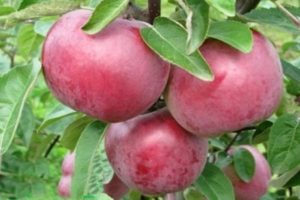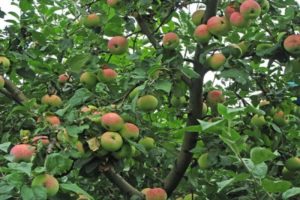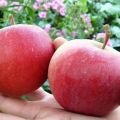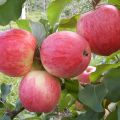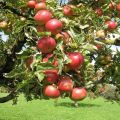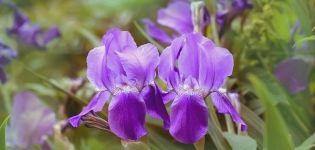Description and characteristics of the variety and varieties of Fuji apples, fruiting and cultivation
Japanese selection of fruit crops led to the appearance of Fuji apples in our market. They have earned recognition for their excellent taste, long shelf life. The culture is distinguished by late flowering, abundant fruiting. A popular apple tree in China, Japan gave impetus to the creation of hybrids and spread throughout the world. The variety can be grown by anyone at their summer cottage.
Fuji variety description
Many people know the description of Fuji fruits. But what a tree looks like, the features of its structure are not known to everyone.

Historical data on variety creation
Fuji's qualities are based on the best characteristics apple trees Red Delicious and Rolls Janet. The apple tree is named after the Fujisaki area where it was born. The culture spread quickly throughout the world and is now cultivated in gardens in Europe, Asia and America.
Useful properties of fruits
Fuji red apples are good for humans. Especially it is necessary to include more fruit in the menu for those who wish to lose weight. There is nothing better than apples to increase immunity, stabilize blood cholesterol levels. Fruits help to cope with anemia, gout, improve the condition of bones and heart muscle. They are useful for strengthening the nervous system and stabilizing sleep.
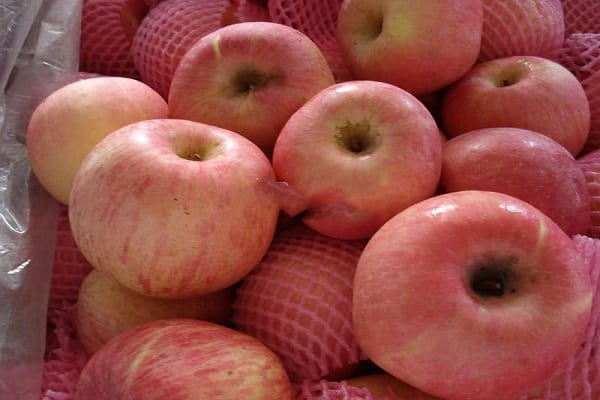
Caloric content of the product
Fuji fruits contain the most carbohydrates. The calorie content per 100 grams of apples reaches 70 kcal. Most of all in the fruits of fiber, pectin.
Chemical composition
The benefits of apples are associated with the vitamins it contains:
- retinol;
- ascorbic acid;
- pyridoxine;
- pantothenic acid;
- folic acid.
There is a lot of iodine, iron in fruits, enough magnesium, calcium, phosphorus.
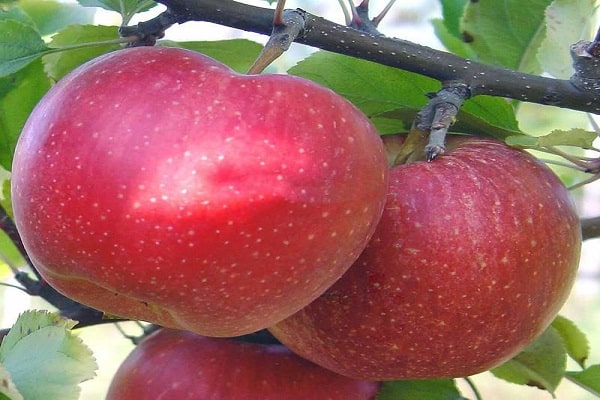
Taste qualities
The taste of Fuji apples is peculiar. The crispy white flesh contains hints of real apple flavor. There are very sweet fruits where sugar is diluted with a small amount of acid. There are specimens with a high acid content. But the taste is harmonious in any fruit of the variety.And the apple flavor is indescribable.
Similar products
There are products similar to Fuji apples. They are the fruits of the cultivar varieties. This is Kiku and Fuji Aztec. Many consider these apples to be a clone of the main variety.
Negative consequences of use
Rarely, apples are contraindicated. This only happens when a person has gastritis. Fiber from fruits will negatively affect the stomach lining, causing heaviness, nausea. It is harmful for diabetics to eat a lot of apples because of their high carbohydrate content. Fruit juice negatively affects tooth enamel, destroying it.
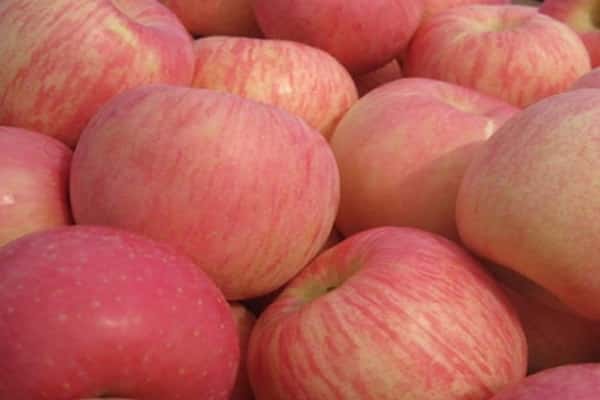
Fuji culinary specialties
You can make desserts from apples of the variety. Fruits go well with other fruits. They are added to salads, baked goods are prepared on their basis. Delicious and healthy juice, puree for baby food is obtained from apples.
Characteristic
In addition to the excellent quality of the fruit, Fuji has an interesting tree structure. It can become a decoration of the garden thanks to its original crown, bright green foliage, bright fruits.
Features of the variety
The main feature of Fuji is apples. They:
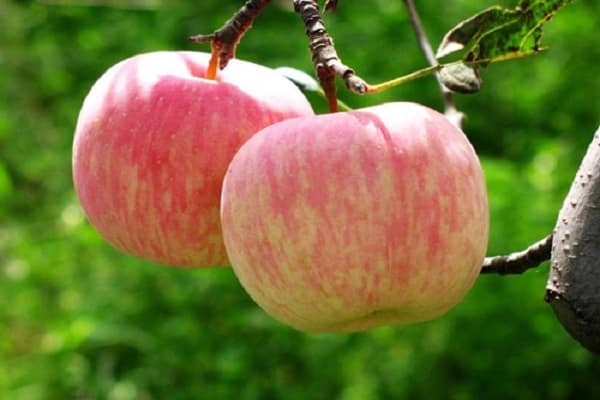
- rounded-cylindrical;
- covered with thin elastic skin;
- with subcutaneous light spots;
- pale yellow or greenish base color;
- covered completely with blush;
- weighing from 140 to 210 grams.
The seeds inside the apples are light brown, of medium size, in narrow cavities.
Tree height
In height, this tree reaches an impressive size, from 6 to 9 meters. The main shoots extend from the trunk at right angles. They are covered with brownish bark with a grayish downy. The bark of the trunk is slightly wrinkled, covered with small lenticels.
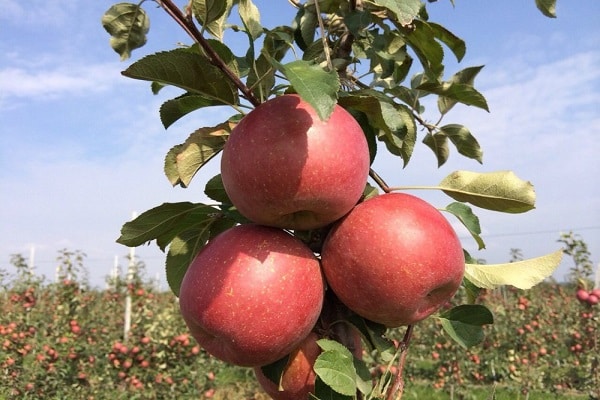
Crown width
Shoots form a dense crown. It can take the shape of a ball, a pyramid, depending on the formation of the crown by cutting. Each year, the growth of shoots is up to 60 centimeters in width and height.
Growing areas
Although the variety is zoned for Asian states, it is successfully grown by gardeners in Ukraine and Belarus. In the south, apples are harvested sweeter than in the northern regions. It is best to choose Fuji hybrids for a temperate climate, which will have time to mature in the Central region, the Volga region.
Yield
Fruiting in an apple tree can be plentiful one year, and much less the next year. After all, a high harvest depletes the apple tree, and it needs rest. It is best to transfer the tree to an average yield. This is done by thinning the ovaries. Then the fruits are received annually. These apples taste great and are stored longer in winter.

Winter hardiness
The apple tree of Japanese selection is referred to winter-hardy crops. The tree tolerates frosts in the range of 20-25 degrees below zero. But the culture will not survive extreme cold. But Fuji hybrids are more resistant to low temperatures.
Disease and pest resistance
The Fuji apple tree has an average immunity to scab. Therefore, more often than not, planting crops can not resist infection with powdery mildew. There is also such a pathology as a bacterial burn. Among the pests of the apple tree are aphids, moths, leafworms. Needed for the prevention of plant treatment with Bordeaux liquid, a solution of copper sulfate. Pests are fought by spraying with insecticidal preparations.

Life span
For culture, a period of life of half a century is characteristic. But the tree has been actively bearing fruit for 30 years. As we age, apple yields decline.
Planting and leaving
For full-fledged vegetation, fruit crops need careful care. An important role is played by the time of planting the apple tree, preparation for the event.
Planting seedlings
Fuji apple tree seedlings for the garden are selected 1- or 2-year-old. They must have a root system, a trunk without damage, 2-3 branches. Prepare in advance a place for planting with loose soil. They love apple trees, the sun, open places.But for them, exposure to cold winds is dangerous.

Timing
In autumn, apple trees should be planted in the first decade of October. If planted later, they may not survive the winter due to weakness.
In the spring, planting is done when the snow melts and warm weather sets in. But the buds at this time should not yet bloom.
Technology
They dig planting holes in the selected area in advance, no later than 3-4 weeks before planting. The diameter of the pit should be within 80-90 centimeters, and the depth should be 50-60 centimeters. Before the procedure, fertilizers are added to the pit by mixing with the ground: manure, superphosphate, potassium salt, ammonium nitrate.
If the soil is heavy, clayey, add sand or drainage.
A mound of humus is poured in the middle. An apple tree is planted in it. Place in the middle, spreading the roots. Then soil is poured. After filling the hole, they look so that the root neck is 4-5 centimeters above the ground.

Distance
The gap between the plants must be respected, otherwise they will begin to shade each other, and the roots will not have enough nutrition. Depending on the height of the tree, the distance to the honey with apple trees is also selected. An ordinary tree 6 meters high requires a distance of 4 meters from a neighbor. Dwarfs and half-dwarfs are quite 2-3 meters away.
Pollination and pollinators
For Fuji to pollinate, it is necessary that there are more insects in the garden during flowering. The variety needs neighbors to help pollinate the apple tree. These include apple granny smith, Red Delicious, Idared, Gala. Cultures begin to bloom at the same time. And Fuji also participates in pollination of a number of growing trees.
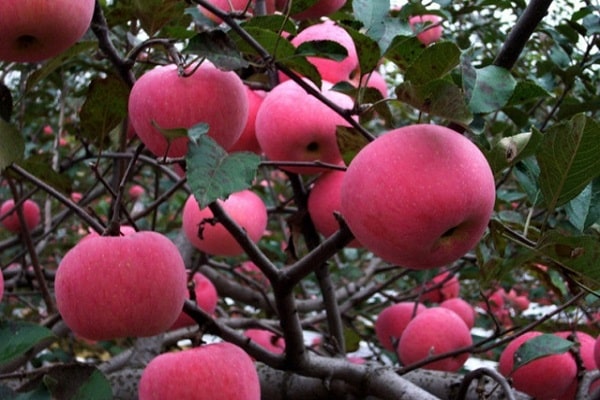
Growing
Planted on fertile, loose soils, apple trees grow successfully if they are properly cared for immediately after planting. In addition to watering, you need to mulch the trunk circle with peat, humus or compost. Then, digging it up in the spring, they feed the apple trees. Fruiting is also influenced by tree pruning. It can be formative, sanitary, anti-aging.
Agrotechnical measures
When comfortable conditions are created for the tree, it will soon turn into a tree with a powerful trunk, strong root system. And the fruiting of the variety will be annual and high. Apple agrotechnology includes activities for:
- irrigation;
- fertilizer;
- pruning;
- treatment against diseases and pests;
- preparing for winter.
Every season agrotechnical measures are carried out aimed at improving the growing season of the crop.
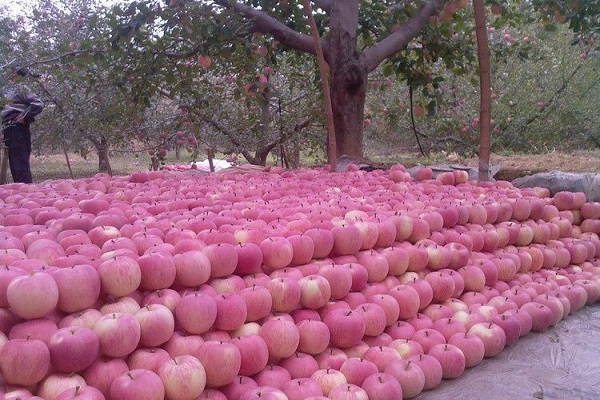
Pruning trees
The main methods of pruning a young tree include shortening and thinning. One-year shoots must be shortened so that the crown is more branched and has a rounded shape. It is necessary to remove part of the branches for a third of the length of the annual growth. Every year the degree of pruning decreases, and if the growth has reached only 30 centimeters, then they do not touch it.
As soon as the tree begins to bear fruit, they are only engaged in thinning the crown, lightening it. The procedure is also carried out in order to transform the growth shoots into fruiting ones.
Features of ripening and fruiting
To properly care for the tree, you need to know about the peculiarities of the ripening and fruiting of the Fuji apple tree. All varieties have different growing times, they bloom at the same time. This is taken into account when caring for plants.

The beginning of fruiting
Usually, a varietal fruit crop begins to bear fruit in the 4th year of life. If it is grown on dwarf and semi-dwarf rootstocks, then the fruits appear 1-2 years earlier. The maximum yield is obtained from an apple tree 10 years old. Maintain this state by conducting agrotechnical measures, rejuvenating plantings.
Bloom
Usually snow-white flowers appear on Fuji in late April to mid-May. Terms vary depending on the climatic conditions of growing, weather.Flowering will begin massively when the air temperature is within 15-20 degrees Celsius for several days. The flowering period of Fuji lasts 1-2 weeks. If the weather turns cool, it will drag on for several days.
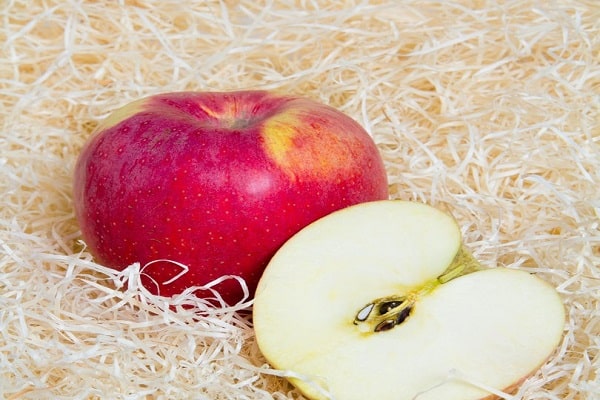
Vegetation
The duration of the growing season is noted for the variety of Japanese selection. Indeed, starting to come to life in early spring, the tree develops completely in October-November, when the leaves fall. Again, weather conditions can intervene. When summers are hot and dry, apples ripen faster. In cool weather, plant development and the final growing season will last until mid-November. At the same time, the growth of wood is delayed, the root system begins to strengthen, preparing for winter.
Fruit ripening time
The Fuji apple tree is classified as a late winter species. The plants reach ripeness only in October. Determine the degree of readiness of apples by intensive coloring of the fruit. After harvesting, the apples reach their best taste after lying indoors. They become sweeter, sourness disappears from the pulp.
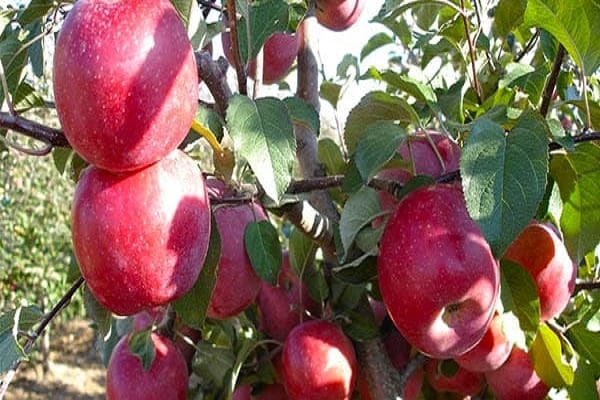
Fuji varieties
Since the variety belongs to vigorous crops, not everyone will be able to make room for such a powerful tree. Hence the appearance of subspecies of the variety. It is best to choose Fuji on dwarf and columnar rootstocks.
Dwarf
To create trees of a medium-sized type, take rootstocks of dwarf and semi-dwarf apple trees. This work leads to the fact that the tree:
- reaches a height of 2-3 meters;
- occupies a small area of the garden;
- begins to bear fruit 3 years after planting;
- gives bountiful harvests at the age of 10.
The apple tree is easier to care for, and the compactness of the crown allows you to plant more trees, increasing the productivity of the variety.
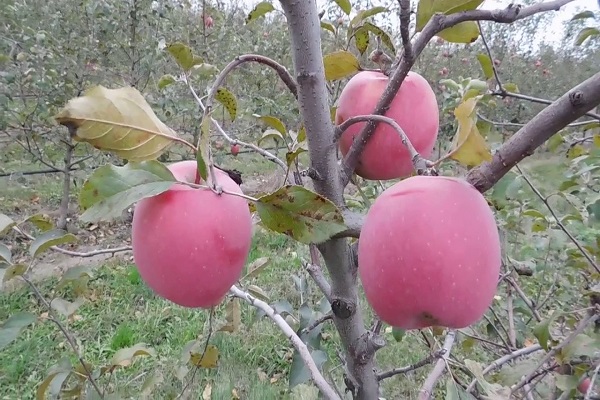
Columnar
The columns of Fuji apple trees, hung with bright red fruits, look interesting. The subspecies also begins to bear fruit in the 2-3rd year of life, and already at the age of 7 it yields fruit stably. Columnar apple trees are planted at a distance of half a meter from each other, which is important for gardeners with small plots.
Hybrids
Breeders work with the Fuji apple tree in order to keep the taste and quality of the fruits unchanged, as well as to shorten the growing season, and increase the winter hardiness of the crop. Now you can pick up that apple hybrid for growing that is suitable for a specific area.
Aztec
Bred apple tree in New Zealand. She begins to bear fruit a little earlier than the "parent". The apples are harvested in September. They are red in color with juicy, sweet and sour pulp.

Kiku
One of the best clones of Fuji also matures 2-3 weeks earlier. Apples with a pink blush reach a mass of 200-250 grams. The fruits are appreciated for their aroma and excellent taste. The tree belongs to medium-sized, early-growing.
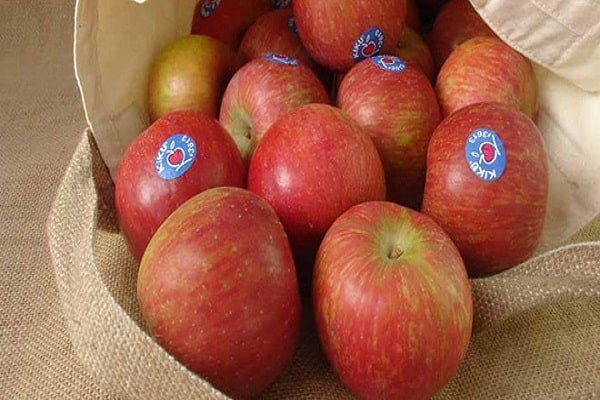
Yataka
The apple tree also bears fruit before the main variety for 2-3 weeks. Differs in large, 250-300 grams, fruits. The vigorous species is often overloaded, so it needs to thin out the ovaries. Better to grow on dwarf and semi-dwarf rootstocks. The plant suffers from weak immunity to fungal infections.

Red (Nagafu)
Apples reach technical maturity at the end of September. The tree is famous for its bright red fruits weighing 300 grams. Apples can be used fresh, they are suitable for harvesting. The fruits tolerate transportation well and are stored for a long time. The subspecies is distinguished by its resistance to frost.
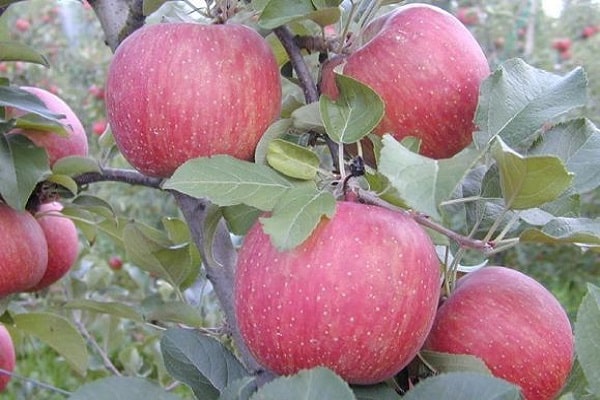
Toshiro
One of the vigorous tree species tolerates low temperatures. The apple tree bears fruit with aromatic, tasty fruits. They are also outwardly beautiful: pink-red, decorated with light subcutaneous dots.

Cancer-Cancer
The variety is close to Golden Delicious in terms of fruiting. Large apples are valued for their tender juicy pulp, sweet taste with a slight sourness. The only drawback of the variety is the lack of self-fertility. There will be no ovaries on the tree without pollinators. The apple tree is resistant to scab, but is often sick with powdery mildew.
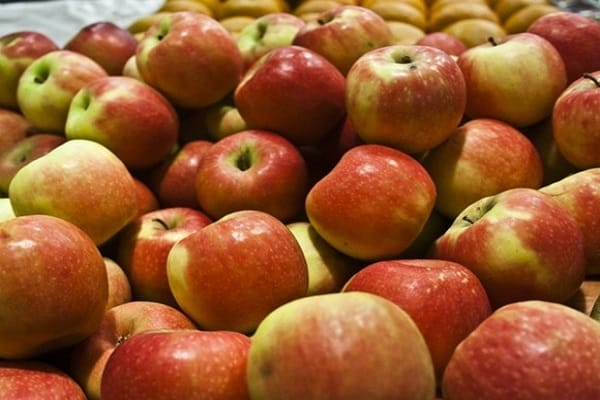
Beni Shogun
A hybrid was obtained from the Yataka apple tree by Japanese breeders. The main fruit color is green, but with a bright blush over the entire surface. In fruits, the weight reaches 350 grams. They note not only that they have an excellent taste, but also do not crack. The tree endures winter cold.
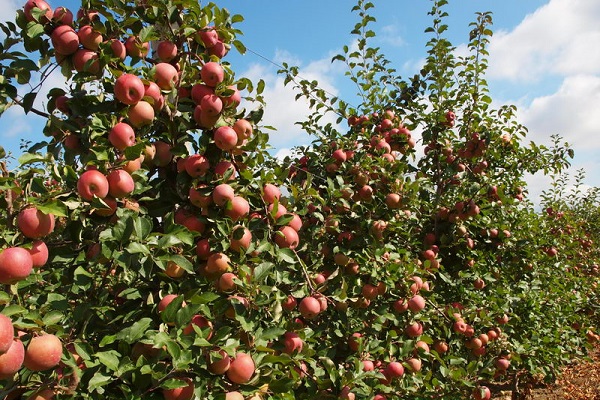
Storage and transportation of fruits
The late winter Fuji variety is famous for its long shelf life. With properly organized storage, they can lie for a year. In winter, they are transported over long distances, supplying fresh fruit to the population of the northern regions. This is one of the best varieties with excellent keeping quality and transportability.

